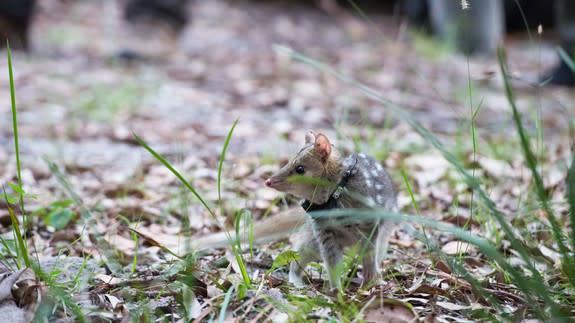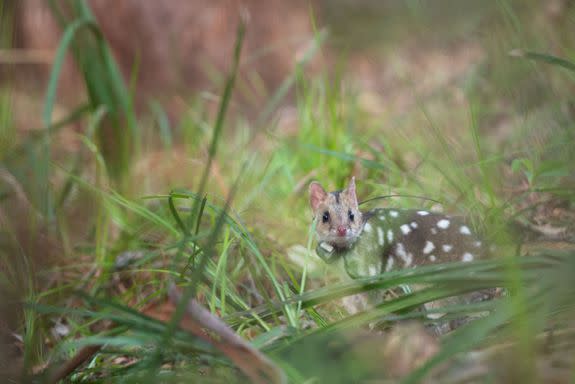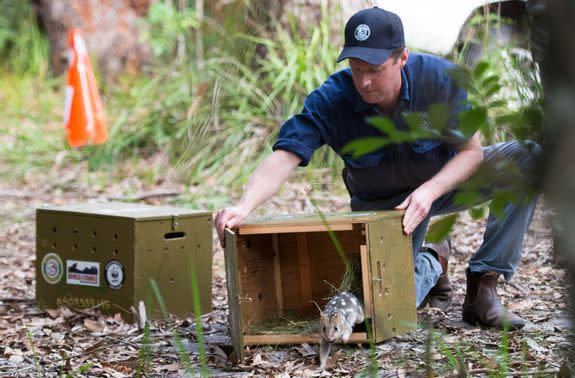Eastern quolls reintroduced into the wild after 50-year disappearance

Once abundant on Australia's mainland, the eastern quoll — also called the native cat — has been extinct in the country for half a century.
Fortunately, they're still widespread in Tasmania, where they exist in the wild and in captive breeding centres on the island state. Now, they're making a comeback.
SEE ALSO: It's not often you see koalas swim, so here's one paddling across a river
This week, 20 eastern quolls were returned to the wild at Booderee National Park, located on the south coast of New South Wales.
#QuollsIncoming! After being extinct for roughly 50 years on mainland Australia, these Eastern Quolls are making a comeback. pic.twitter.com/OEziMtE3Lr
— WWF_Australia (@WWF_Australia) March 15, 2018
The marsupials were transferred from Tasmanian sanctuaries, and the area had to be cleared of predators to ensure the native animal would flourish once again.
"Translocating species can be a long and difficult process, but the rewards are high," Booderee National Park's natural resource manager, Nick Dexter, said in a statement.
"We’ve spent 15 years undertaking intensive feral predator control in the surrounding region. This makes Booderee unique and it’s already led to success in reintroducing other locally extinct mammals to Booderee in recent years so we’re confident that this project has every chance of success."

Image: © WWF-Aus / Morgan Cardiff
It's the third native species reintroduced to the park recently, following the release of long-nosed potoroos in 2014 and southern brown bandicoots in 2016.
The eastern quoll release comes as a result of a collaboration between Rewilding Australia, with support from WWF-Australia, the Taronga Conservation Society and Shoalhaven Landcare.
They'll be intensively tracked via GPS over the next three months, then regularly over a three-year period. Researchers will also keep their eye on predators.
"Foxes, both outside and entering the park will also be monitored and managed with the aim of ensuring fox incursion to the park is very limited," Australian National University researcher Natasha Robinson said in a statement.

Image: © WWF-Aus / Morgan Cardiff
"This will help us understand how resilient the eastern quolls can be to very low densities of feral predators in the landscape."
A mysterious epidemic in the early 1900s decimated populations of the eastern quoll, which was exacerbated by the spread of foxes, an invasive species, across mainland Australia.
Last regularly sighted around the 1960s, this week's introduction will hopefully change the fortunes of the eastern quoll, listed as endangered by the IUCN.
